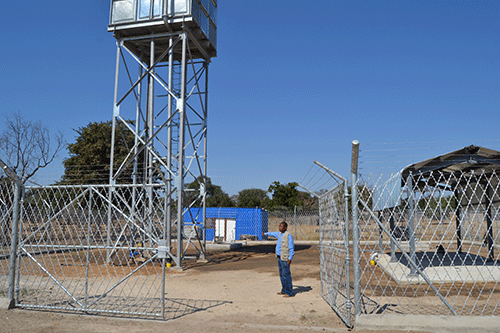KATIMA MULILO – The thirst of the multitude of needy residents of Sibbinda who have faced severe shortages of clean water since independence will soon be quenched.
This follows the installation of a new booster water pump sub-station by NamWater. The new installation is expected to expedite the distribution of potable water once the pipeline is completed.
The Sibbinda constituency remains a densely populated area in the Zambezi region with underground water that is fit for human consumption.
New Era visited the area this week and could observe the severe water shortage at government extension offices, health facilities and schools that often go for days without a drop of water.
“We can go for days without water at the clinic. One day the water is on and then it goes for days. The water supply is not reliable here. We have to help mothers deliver and need water for patients. We are hopeful the new NamWater sub-station will soon be opened so we can have uninterrupted water supply,” said a registered nurse at Kaenda clinic who preferred anonymity.
Similar concerns were shared by nurses at Sibbinda clinic who said they save the little water that trickles into the tank at night.
Most concerning is water shortage observed at several cattle posts in the area. This has resulted in local farmers moving their livestock long distances to access drinking water as most boreholes have dried up or have become brackish.
This state of affairs has prompted NamWater to upgrade infrastructure, construct pipelines and drill boreholes to provide reliable potable water in the area. One such project is the newly built Sachinga water pump station along the Sibbinda-Katima Mulilo main water pipeline.
To increase the capacity flow of water for residents at the end of the pipeline, the Katima-Sibbinda pump station needed a new booster. The completion of the water pump sub-station will bring relief for tens of thousands of people in Sibbinda as the largest constituency in the Zambezi region.
Sibbinda councillor Mickey Lukaezi confirmed the new development is part of the relining of Katima Mulilo’s 6 000 cubic metre reservoir and is part of the Katima-Sibbinda pump station capacity upgrade.
“This is a new development. NamWater started construction in 2021. Once it is finished, it will push water to the clinics and schools at the end of the pipeline. Once they install the pump, then the issue of water at Sibbinda will be something of the past because the water pressure has been increased. The delay is just a regulator that need to be installed. This is a massive solution to Sibbinda’s water problem. If this is boosted, then I will be smiling, and the community will be smiling,” Lukaezi said.
Additionally, he confirmed two boreholes have been drilled by the agriculture ministry to cater for livestock in Sibbinda. According to Lukaezi, once these two boreholes are installed, they will service about 18 cattle posts in dire need of potable water.
“The boreholes will be highly appreciated by residents of Sibbinda. Farmers shift their cattle to the nearest school where there is clean water. The challenge is that there is no grazing land where potable water is available and there is no clean water where grazing is. For those who can afford it, they use their vehicles to take water tanks to their cattle posts for their animals. The situation is really bad,” the councillor noted.
Besides Sibbinda, other areas experiencing water woes include Judea Lyaboloma, Linyanti, Kongola, Kabbe North and South, as well as Katima Mulilo constituencies.


